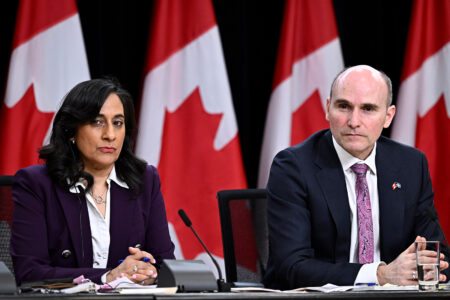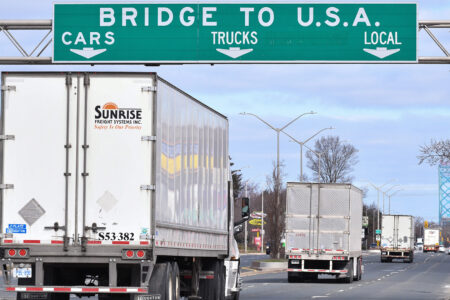
It is difficult to say when exactly a government becomes “digital.” As a public servant, you could try looking at the UN’s e-Government survey, perhaps, or examine the health of your flagship technology projects. If you are a policy-maker, you know it’s working when your job changes. And if your job isn’t changing, the chances are you are getting in the way of the development of digital government.
Seven years ago, the UK set up the Government Digital Service (GDS). GDS was a new team based in the Cabinet office. It operated as a central unit charged with improving users’ online experience of government. Founded at a time where technology was under a dark cloud ─ a huge IT program spanning the National Health Service (NHS), one of the costliest public projects in the world, had been put out of its misery after delivering little. Damningly, for a nation where four-fifths of the population was online, happily shopping or banking, dealings with the state were still in the realm of paper and call centres. This was a country with one of the highest per capita outlays on government IT in the world. Yet it was also one where going online to pay your taxes or to get a licence was much like a trip to the dentist. Necessary, but far more painful and awkward than you’d hope.
Successive governments tried to stop government IT projects from being a byword for disaster. All failed. The reason they failed was because they tended to focus on the wrong things. Sometimes they focused on changing the IT, throwing more and different technology at the same problems. Sometimes they focused on changing the project – asking suppliers to sprinkle some private sector magic onto it; or creating innovation labs that, cordoned off from day-to-day business, allowed a few lucky public servants to work in new ways.
By bringing new processes, culture, people and technologies into the heart of government, GDS tried to do things differently. The changes it instituted ranged from creating blogs to communicate with people openly and establishing open source technology across government, to publishing real-time service-performance data and changing recruitment processes. Along the way, it established several online public services dealing with welfare, tax, transport and justice, saved the government over $6 billion over four years, and helped establish a cohort of internet-era civil servants.
We at GDS found that when it comes to digital, the trick isn’t to try and change the IT or the project, it is to change government.
Changing the government sounds like a grandiose, if not impossible, ambition for any public servant. And maybe it is, if you’re trying to change everything at the same time. The key to making progress toward a digital government is to start small, to do the hard work to make service delivery simple, and to be ruthlessly focused on meeting users’ needs.
None of these things come naturally to any big organization, let alone a government. Making them happen requires a small but meaningful shift in what policy means.
In most administrations built on the Westminster model, policy stands first among equals. Those who work in policy enjoy proximity to politicians and prestige. Traditionally, good policy requires two things: an understanding of citizens and an understanding of government.
Policy generalists are good at writing about large-scale complexity. But being good at writing about hard, practical things – designing a strategy to build a low-carbon economy, for example – isn’t the same as tackling those policy challenges. Working on paper gives policy-makers a pass on thinking hard about implementation. Sometimes doing very prosaic things, like sketching out what a new public service could look like in code, showing webpages on a tablet to real people and then trying to improve that service on the basis of what they have said, can expose the cracks between the words.
To an experienced policy-maker, this can seem facile. Many have spent years making assumptions about human behaviour. Having someone suggest that you should go and watch some human behaviour instead is insulting. There’s much more to policy, you might think, than just watching human behaviour.
One of the things that GDS’s efforts revealed was the ways the policy-makers role needs to change.
But one of the things that GDS’s efforts revealed was the ways the policy-maker’s role needs to change. It no longer makes sense to have policy-makers be the sole arbiters of how citizens and businesses might react to a minister’s promises to reframe the welfare system or improve public health. Distanced from the frontline, they are often no longer the best qualified for the task.
GDS was composed of multidisciplinary teams tasked with delivering public services ─ policy-makers were part of the mix instead of calling the shots. User researchers and ethnographers extracted insights from research and talked to actual people. Data analysts trawled through web logs that showed how users navigate a service. Designers and developers interpreted feedback from users and turned it into code, not policy papers.
The role of the policy-maker in these teams is not to be the voice of the user; in a digital government, users have their own voices. Instead, the role of the policy-maker is to make sure that users’ voices can be heard within a department. They defend those voices when there are competing priorities, making sure the minister hears them.
As part of a multidisciplinary team, policy-makers are no longer only shaping delivery according to policy. They are also shaping policy according to delivery, drawing insights from tangible experiments rather than abstract theories. In the UK, there was a famous case of a service where a policy hinged on the legal definition of a couple. The minister responsible had his own, clear idea of what “a couple” meant. The service’s early users turned out to have very different, somewhat more flexible views on what it meant – views that might have been missed. The result of not heeding the users might not have been just political embarrassment; the unintended consequences of doing so might have been missed welfare payments, trips to foodbanks, even homelessness.
Giving ministers access to those voices matters. So does shaping political decision-making on the strength of the best available evidence. That is what policy-makers do in digital governments.
This article is part of the Wiring Public Policy for Digital Government special feature.
Photo: Shutterstock, by Thinglass.
Do you have something to say about the article you just read? Be part of the Policy Options discussion, and send in your own submission. Here is a link on how to do it. | Souhaitez-vous réagir à cet article ? Joignez-vous aux débats d’Options politiques et soumettez-nous votre texte en suivant ces directives.








